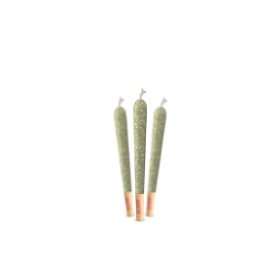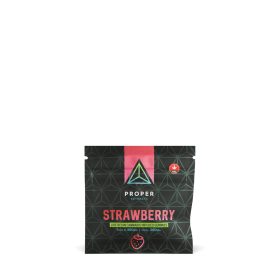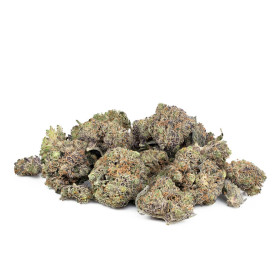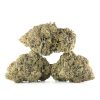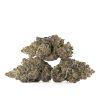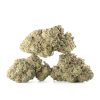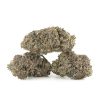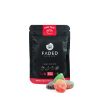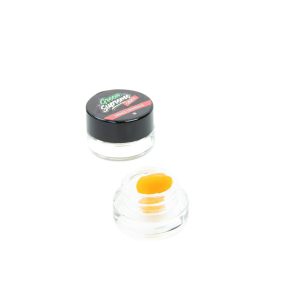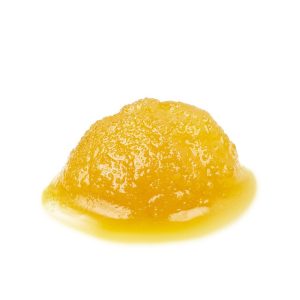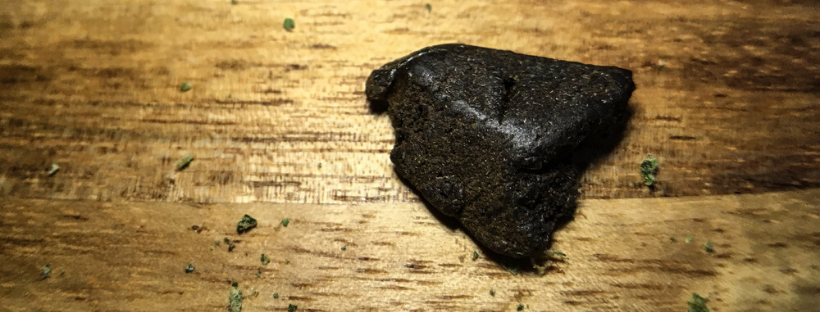Hashish, often called hash, is made from the concentrated resin of the cannabis plant. It contains psychoactive cannabinoids like tetrahydrocannabinol (THC) and over a hundred other materials like CBD, CBN, and CBG.
Dried flowers are often rubbed over a tiny mesh to produce a hash. After being separated from the plant material, the trichomes fall through a screen. Hashish is made by collecting resinous glands and then putting heat and pressure on them to knead them into a solid lump.
Additionally, there are numerous extraction methods for producing hash, some of which have been honed throughout hundreds of years by societies with long histories of cannabis cultivation.
What is Hash?
Hash is the distilled resin of a cannabis plant. Trichomes are the glands covering the plant’s exterior; once the resin has been collected and refined, it takes the form of a thick paste. Hash is often offered as bricks or balls and has a dark green or brown hue.
Hash is a cannabis product and has been utilized for countless years, ever since its sticky consistency first caught the attention of humanity. The hash includes anywhere from 5% to 405 THC and can be smoked or used in food; it also typically has greater CBD than regular cannabis.
Generally, the final amounts of psychoactive cannabinoids, such as THC and CBD, will be determined by the strains of cannabis used, the growing circumstances, and the hash-making methods.
The Long History of Hash and Marijuana
The use of hashish, or cannabis concentrate, dates back to ancient Egypt. Moreover, hashish, as it is often known today, started in India, where harvested natural substances were rubbed together by hand to produce sticky nectar. It was then wrapped into a ball and placed in religious temples.
When cigarettes were introduced, the resin was mixed and smoked, marking its first use as an ingested drug later known as “weed.” Initially cultivated by early colonists for its fibers and ropes, cannabis eventually became a recreational drug in the New World.
It’s common for modern users to draw parallels between their cannabis and hashish consumption and that of ancient civilizations. But modern usage had exploded into this realm of enjoyment and everyday use when the initial goal of cannabis manufacturing was not to induce a high.
Understanding Cannabis Flower
The cannabis plant is the starting point for any investigation into hash. Generally, the buds of female cannabis plants create a thick, sticky resin if they go unpollinated for long periods. Trichomes, which look like crystals to the naked eye, and microscopic glass mushrooms are the building blocks of this resin.
How to Use Hash
A vaporizer is popular among people who regularly consume marijuana concentrate since it eliminates the need for smoke, has no discernible odor, and can be concealed easily. Moreover, dabbing or vaping refers to consuming marijuana concentrates through a vaporizer.
The drug hashish is often smoked, much like marijuana. Both edible and smokeable forms of cannabis exist. A few of hash’s most common applications are as follows:
- The supple solid form of often called wax or budder
- Shutter: a tough resinous material
- Hash oil
- Consumed orally
You can “dabb” with a special tool or vaporize hashish concentrates with a pen or smoke them in a pipe or water pipe. Tobacco or marijuana can be wrapped into a blunt. It’s also versatile enough to be used in cooking or as a tea ingredient.
Hash Potency
The degree to which hash affects the user is proportional to the amount of THC it contains. Like cannabis, hashish contains psychoactive compounds like THC and cannabinoids but at an inconsiderably higher dose. Depending on the hash products, the concentrations may change.
As federal law toward marijuana use relaxes, so make the demand for THC extracts. The THC percentage of marijuana products can be as high as 80%, up to four times as potent as regular marijuana potency, which may only contain 20% THC.
Hash Use Effects
Hash and other concentrates have significantly higher concentrations of THC, which may increase the potency of its effects. The following are the short-term effects of hash use:
- Memory consolidation
- Heightened sensory perception (of sights, sounds, time, and touch)
- Increased appetite
- Anxiety and panic attacks
- Increased heart rate
Hashish and marijuana concentrates are still too new for research on their long-term effects to be conclusive. However, cannabis itself has been examined for its effects over the long term.
- Anxiety and hallucinations are all possible psychological side effects
- Changes in blood pressure and pulse rate are possible
- Memory, problem-solving, and sense perception are all impacted by THC content and marijuana use
Different Types of Hash and Its Extraction Methods
As the plant material evolves and new strains are developed, the THC content of marijuana reaches high potential.
Consumers are always looking for innovative ways to maximize the benefits of this miraculous plant material. Isolating the cannabinoids from the trichomes of cannabis plants, variously known as concentrates, extracts, or hash, increases the drug’s potency. Numerous varieties of hashish are now available.
1. Bubble Hash
Flavor, potency, and purity contribute to bubble hash’s universal praise. Because of the freezing temperatures employed in the extraction process, Bubble Hash often retains a lot of its aroma and flavor, compounds that are often degraded by heat.
Bubble Hash often referred to as Ice Water, is vastly distinct from the other hash types. A mixture of frozen hemp buds, water, and ice is stirred to isolate the trichomes from the plant matter. Then the resulting water is strained through a series of sieves of progressively finer mesh. The final product resembles flaky honey crystals in texture and is called a hash.
With this technique, you can get a hashish of varying qualities, the best of which often fall between the screen’s 25 and 45-micron size range. Hashish filtered via a 90-220 micron screen is of inferior quality since it contains more organic material.
2. Dry Sift Hash
Dry sift hash is produced by passing dried cannabis buds and trimming through fine-mesh screens at a slow, even pace. This light rubbing is essential for separating the trichomes into the powdered remnant known as kief. Based on the production region, this kief is compressed into blocks in various ways.
The dry-sieve method is often cited as the most common approach to hashish extraction. To collect the powdered, crystalline resin, mature, picked, and dried marijuana plants are rubbed on a fine-mesh screen. The finer the screen, the greater the quality of the generated hash, whereas the finer the screen, the more dried marijuana will be included in the final product.
3. Hash Oil
Hash made using BHO might vary in freshness, dryness, THC/CBD content, extraction temperature, cleansing, and more. Extracts of butane hash oil (BHO) can be differentiated from one another by their texture, which also influences the concentration of terpenes and the benefits it has.
Depending on how much butane is used, BHO extraction circuits can be split into two kinds:
Open Circuit
The butane is exposed to the atmosphere. In the event of contact with other combustible materials, this poses a significant risk. A trained expert should do this publicly to monitor the risks better.
Closed Circuit
Butane is contained within an enclosed system that prevents it from coming into contact with the atmosphere. Due to the presence of possibly lethal components in the air, the quality is also improved.
4. Rosin Hash
Hash’s newest addition, rosin, is a very recent development. The resin is melted using heat and applied to an absorbent substance very straightforwardly. Resin pulls away from the absorbent material when it hardens again, leaving the resin resting above the substance.
It’s a fantastic illustration of a solvent-free cannabis extract. You may make it in the comfort of your home; it is risk-free and has remarkable results. Now even American industrial firms use this strategy to mass-produce rosin hash.
To make rosin hash at home with a standard set of hair straighteners. Get a piece of parchment or nonstick paper and fold it in half. Use the hair straighteners to warm the paper and squish the flower. The hair straighteners apply pressure to the bud as the heat transforms the resin into a liquid that can be more easily extracted.
Keep the pressure on for one more minute! The rosin will have been pushed from the bud, so you can take it from the paper and scrape it up.
5. Solvent Hash
Crystals are extracted from the plant material using either alcohol or butane gas in this method. While a screen is still required, it is typically only one size, leading to uniformly high-quality hash instead of the varying grades attained with water extraction.
Since THC and other cannabinoids are solvent-soluble, the resin can be dissolved in alcohol or another solvent, and the cannabinoids extracted from it. To produce modest amounts of butane, a device like honey oil is helpful; specialized machinery is recommended for greater volumes.
6. Pure Marijuana Extract Hash
The purity and strength of cannabis resin extracts have skyrocketed thanks to the development of cutting-edge methods for processing cannabis. As the legal medicinal cannabis market matures internationally, the hash created by a select group of licensed, controlled manufacturers is often regarded as some of the best of its kind.
High-quality extracts are typically prepared with a solvent like alcohol, butane gas, or even just cold water. According to this view, all methods of hashish production require crystal separation. While a dry sieve or hand rub can get you quite close to the purity you’d get from a mechanical or chemical extraction process, it’s not quite as effective.
Crystals are extracted from plants by dissolving them in water or a solvent and then straining the resulting suspension through a fine screen before drying. The items are then cured for several weeks to remove any remaining solvents or water.
7. Kief
Many cannabis users have high-end, multi-chamber grinders on hand. For this reason, grinders typically have a tray at the bottom to capture any resin that escapes from the ground bud.
Kief is far stronger than smoking pure buds since it comprises trichomes. Since you’d need to grind quite a few buds to get kief, you wouldn’t be able to produce large quantities of it. It’s a lengthy process. But if you treat yourself to a pleasant novelty every few months due to your traditional cigarettes, invest in a grinder with multiple chambers.
8. Finger Hash
Making hash with your fingers is one of the earliest extraction methods and uses no modern equipment. Before people knew about solvents or blasts, their ancestors manufactured finger hashes, primarily in India.
The traditional method of making hash from fresh buds involves rubbing the buds between the thumbs and palms. Generally, the oily, THC-rich covering of marijuana buds gathers on the palms after a little work with a rubbing motion, and a scraper is used to remove it.
It has a squishy consistency and is typically extremely dark green, bordering on black. Hardening and a loss of flexibility can occur in cooler temperatures. A high-quality finger hash will not contain any plant parts, including seeds.
The Gateway to the Cannabis Experience

With the growth of the cannabis plant and the development of new varieties, marijuana plants are now capable of releasing THC in quantities never seen before.
You may check Green Society’s online menus for more information on their selection of THC concentrates and cannabis flowers. Try out several flower strains to get a feel for the cannabis market and find the cannabis products that work best for you.

